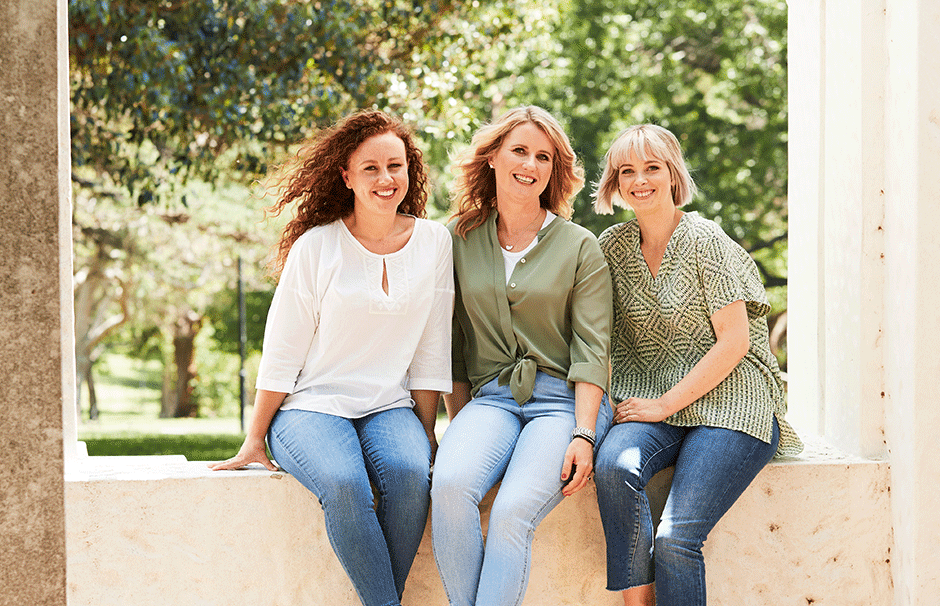What is the ripple effect?


The power of behaviour change
It’s no secret that people living under the same roof share a lot. But you might not realise how much the healthy lifestyle behaviours you adopt can rub off on your significant other.
Research conducted by the University of Connecticut shows that when half of a couple joins WW, there’s a good chance their partner will benefit too. Around one-third of partners lost at least 3 per cent of their body weight over a six-month period, even though they weren’t trying to. The study’s lead investigator, Professor Amy Gorin, calls it the ‘ripple effect’. “When one person changes their behaviour, the people around them change, too,” she says.
Married couple Anna & Peter lost over 24kgs together and became closer than ever.
5 step plan to get healthier together
WW member and Coach Carolyn has first-hand experience. Her husband Ray lost 17kg over a 12-month period simply by following her lead. Ray says he feels so much fitter, and that his health has improved, too. “Carolyn makes it easy. I eat the same things she does, and she helped me realise that being active doesn’t have to mean pumping iron at the gym, which I’ve never enjoyed. I just joined her on her after-work walks, which has made a huge difference.”
While this ripple effect may occur organically, the following five-step plan can kick things up a notch and help guide your loved ones on to a healthier path with you.
1. Get active together
According to US researchers, when you achieve the recommended amount of physical activity, your partner’s odds of doing the same increase by up to 70 per cent.
You can also take a leaf out of Carolyn’s book and invite your partner to join you. Other research also proves that couples who stay active together are much more likely to be physically active 12 months after starting. “It’s also provided a great opportunity for Ray and I to spend time together,” says Carolyn. “Our walks are a chance to catch up on each other’s days.”
2. Share some info about Points
Your partner doesn’t have to track or aim for a points budget, but sharing your ‘points knowledge’ will have an impact. “Ray was really intrigued to learn the Points value of some of his favourite foods, and why some are higher in Points than others,” says Carolyn. “I noticed that he started to make different choices, as a result.”
Cousins and best friends Nicole & Saskia lost 24kgs together.
3. Involve them in meal planning
It’s a habit that promotes a healthier, more varied diet and Lisa recommends doing it together. “Getting involved in planning our meals helped Baden appreciate that WW isn’t a ‘diet’ and that there’s so much variety and so many delicious recipes to choose from,” says Lisa. “Plus, I really believe that when your family is involved in choosing what they’ll eat each week, they’re much more invested in sticking with the plan.”
Lifetime WW member Lisa Mulcahy says they’ve made life even easier for her – and her husband, Baden. “Baden has never been a WW member, but since I joined, he’s become so much fitter and healthier, and now, the ZeroPoint foods have become his go-to options.”
Carolyn agrees that ZeroPoint foods make it simple for loved ones. “Ray knows I use them to build a meal around, so he’s started doing that too. Now, my husband is always first to suggest the choices on a menu that feature a ZeroPoint food, rather than the other way around.”
4. Plate up and put leftovers away
“I’d always go back for seconds after dinner,” says Ray, “but now I know that what Carolyn puts on my plate is enough to satisfy my hunger.”
To help your partner adopt the same attitude, plate up a meal, then store any leftover food in the fridge before you sit down to eat. Research proves there’s a link between being able to see the leftovers and consuming larger second helpings.
5. Make it a family affair
1. Encourage your kids to cook with you.
You could even let them choose their favourite WW recipes. Why? Research shows that children who regularly help their parents in the kitchen are more confident about the importance of making healthier food choices.
2. Keep healthy options visible.
A US study found that making healthier foods visible and accessible for children, increases the consumption of those foods. So when you’re prepping your own healthy snacks, like vegie sticks, hard-boiled eggs and fresh fruit salad, make extra and leave them on the shelves in the fridge that are at your kids’ eye level.
3. Get active with your kids.
Children whose parents participate in activity regularly are more likely to mimic that behaviour themselves. It also showed that children are 35 percent more likely to do enough physical activity when their parents are active.

